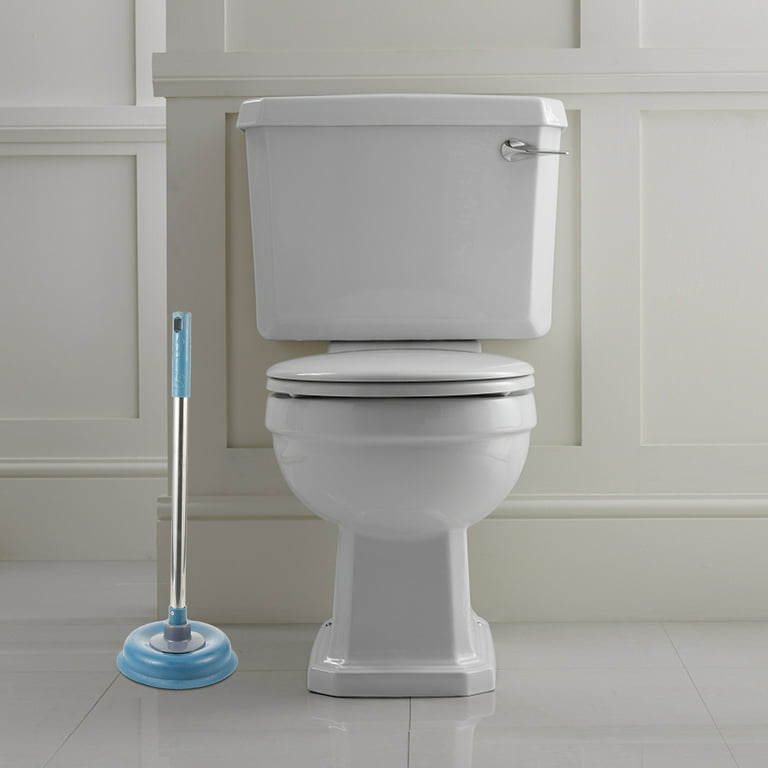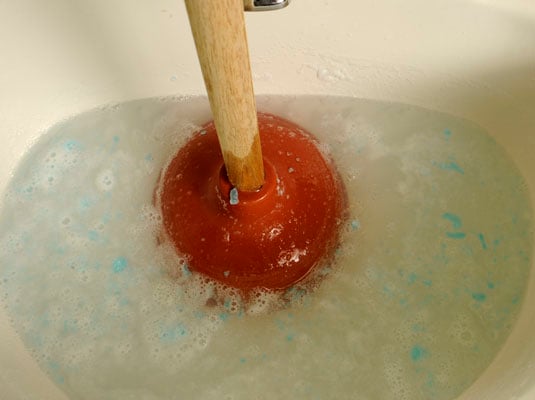What're your concepts on A Guide to Plungers (and How to Use Them)?

Intro
Appropriate maintenance of household drains pipes is crucial for protecting against blockages and guaranteeing smooth water flow. Among the secret devices in every home owner's toolkit is the plunger, alongside numerous drain cleansers developed to tackle persistent clogs properly. This short article checks out exactly how to make use of bettors and drainpipe cleaners successfully to maintain your drains pipes moving freely.
Area 1: Recognizing Plungers
Types of Plungers
There are several kinds of bettors offered, each developed for different sorts of drains pipes and blocks. The most usual types include mug plungers, flange plungers, and accordion bettors.
How Plungers Job
Plungers work on the concept of creating stress and suction to remove obstructions. When appropriately applied over a drainpipe, they create a vacuum cleaner that can take out debris or separate blockages.
Selecting the Right Bettor
Choosing the appropriate plunger depends upon the sort of drain and the nature of the blockage. Mug bettors are ideal for sinks and bathtubs, while flange bettors are better suited for toilets as a result of their style.
Typical Mistakes with Bettors
Preventing these blunders makes certain reliable plunging: incorrect seal around the drainpipe, inadequate force, and unclear surrounding particles.
Section 2: Using Plungers Successfully
Preparation
Prior to plunging, make certain the bettor covers the drain entirely and develops a limited seal. Clear any type of noticeable debris around the drainpipe opening.
Method
Start with mild diving motions to develop suction. Rise pressure progressively, utilizing a stable rhythm. Repeat as necessary up until the drain gets rid of.
Troubleshooting Tips
If diving doesn't function, try readjusting the seal, applying oil jelly for a better seal, or utilizing a various type of bettor.
Section 3: Comprehending Drainpipe Cleaners
Kinds Of Drainpipe Cleaners
Drain cleansers can be chemical or chemical. Chemical cleansers use strong chemicals to liquify obstructions, while chemical cleaners use natural enzymes to break down raw material.
Just How Drainpipe Cleaners Work
Chemical cleansers react with obstructions to dissolve them, while enzymatic cleansers break down natural materials like hair and oil without damaging pipes.
Safety Factors to consider
Constantly use gloves and eye defense when utilizing chemical drainpipe cleansers. Ensure ample ventilation and follow maker instructions carefully.
Eco-Friendly Alternatives
Take into consideration utilizing vinegar and cooking soda or enzyme-based cleaners for green alternatives that are more secure for pipelines and the setting.
Area 4: Utilizing Drain Cleansers Successfully
Application Strategies
Put chemical cleansers straight into the drainpipe opening. Allow them to benefit the recommended time before purging with hot water. Enzymatic cleansers should sit over night.
Preventative measures
Avoid blending various sorts of cleaners, as this can create hazardous fumes. Never ever make use of chemical cleaners along with a plunger, as spilling can happen.
Taking Care Of Persistent Obstructions
For relentless obstructions, consider using a pipes serpent or calling an expert plumber to avoid damages to pipes.
Final thought
Finally, understanding exactly how to utilize plungers and drainpipe cleaners effectively is essential for keeping healthy pipes systems. By selecting the right tools and strategies, property owners can tackle small clogs and stop major pipes issues down the line.
How To Properly Use A Plumbing Snake To Clear Drains
When any drain clogs in our home arise, we tend to gravitate toward the plunger and little else. In cases where the plunger and its vacuum-created pressure are not able to clear clogs, many immediately move to harmful chemicals or simply call their plumber to fix the issue.
we’re happy to help with all drain cleaning needs and concerns. This includes informing you on a few other home remedies you may have at your disposal for minor to moderate clogs, one of which is the use of a plumbing snake. Many people have never used one of these before – let’s go over the steps to take when your drain clogs and you have a plumbing snake available.
Attempt Plunger Use
The first step here, as we noted above, should indeed be to grab your plunger when you notice a drain clog and attempt to resolve it this way. If you’re unsure how to use a particular type of plunger, our plumbers can answer any questions you have. If this doesn’t do the trick, however, you move on to the snake.
Locate And Prepare Snake
A plumbing snake is a metal or plastic device that’s generally about a quarter of an inch thick. It’s design with significant extensions, meant to reach down into your clogged drain and push the clog out. Snakes also contain drain augers that will latch onto and push stubborn blockages.
If your plunger doesn’t clear a clog, locate your snake and bring it to the drain in question. We also recommend keeping a bucket nearby to collect the clog once you pull it out, plus we’d advise wearing goggles and possibly protective gloves.
Feed Snake
Once you’re ready to go, feed the snake slowly down the drain, using the crank device it comes with to keep it moving until it finds the clog. Once this happens, much of the clog will be latched onto the coil so you can pull it out, while the rest will simply break up and flow downward.
Detach Debris
Remove the snake slowly from the drain, and once you’ve done so, pick off any debris that’s stuck to the coil. This is another area where wearing gloves is a must.
Flush Drain
Finally, take a few minutes to ensure the snake has done its job correctly. If you’ve been using it on a toilet, flush the toilet a couple times and make sure everything flows well. If you’ve used it on a different drain, flush it with some room temperature water.
https://www.mybuddytheplumber.com/blog/how-to-properly-use-a-plumbing-snake-to-clear-drains/

Application Strategies
Put chemical cleansers straight into the drainpipe opening. Allow them to benefit the recommended time before purging with hot water. Enzymatic cleansers should sit over night.
Preventative measures
Avoid blending various sorts of cleaners, as this can create hazardous fumes. Never ever make use of chemical cleaners along with a plunger, as spilling can happen.
Taking Care Of Persistent Obstructions
For relentless obstructions, consider using a pipes serpent or calling an expert plumber to avoid damages to pipes.
Final thought
Finally, understanding exactly how to utilize plungers and drainpipe cleaners effectively is essential for keeping healthy pipes systems. By selecting the right tools and strategies, property owners can tackle small clogs and stop major pipes issues down the line.
How To Properly Use A Plumbing Snake To Clear Drains
When any drain clogs in our home arise, we tend to gravitate toward the plunger and little else. In cases where the plunger and its vacuum-created pressure are not able to clear clogs, many immediately move to harmful chemicals or simply call their plumber to fix the issue.
we’re happy to help with all drain cleaning needs and concerns. This includes informing you on a few other home remedies you may have at your disposal for minor to moderate clogs, one of which is the use of a plumbing snake. Many people have never used one of these before – let’s go over the steps to take when your drain clogs and you have a plumbing snake available.
Attempt Plunger Use
The first step here, as we noted above, should indeed be to grab your plunger when you notice a drain clog and attempt to resolve it this way. If you’re unsure how to use a particular type of plunger, our plumbers can answer any questions you have. If this doesn’t do the trick, however, you move on to the snake.
Locate And Prepare Snake
A plumbing snake is a metal or plastic device that’s generally about a quarter of an inch thick. It’s design with significant extensions, meant to reach down into your clogged drain and push the clog out. Snakes also contain drain augers that will latch onto and push stubborn blockages.
If your plunger doesn’t clear a clog, locate your snake and bring it to the drain in question. We also recommend keeping a bucket nearby to collect the clog once you pull it out, plus we’d advise wearing goggles and possibly protective gloves.
Feed Snake
Once you’re ready to go, feed the snake slowly down the drain, using the crank device it comes with to keep it moving until it finds the clog. Once this happens, much of the clog will be latched onto the coil so you can pull it out, while the rest will simply break up and flow downward.
Detach Debris
Remove the snake slowly from the drain, and once you’ve done so, pick off any debris that’s stuck to the coil. This is another area where wearing gloves is a must.
Flush Drain
Finally, take a few minutes to ensure the snake has done its job correctly. If you’ve been using it on a toilet, flush the toilet a couple times and make sure everything flows well. If you’ve used it on a different drain, flush it with some room temperature water.
https://www.mybuddytheplumber.com/blog/how-to-properly-use-a-plumbing-snake-to-clear-drains/

Do you enjoy reading up on A Guide to Plungers (and How to Use Them)? Post a short review directly below. We will be pleased to know your thinking about this blog. We hope to see you back again soon. Appreciated our write-up? Please share it. Help someone else find it. Kudos for your time. Come back soon.
Additional Information